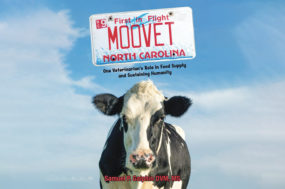If you visit a local farmer’s market you’ll find a feast for your senses. Baskets, bins and counters filled with vibrantly colored fruits and vegetables, the sugary smell of ripening peaches and the sound of a melon being thumped for ripeness. The selections are endless. So how would you buy apples with such varied choices of sweetness, size and color?
You may not be the apple buyer in the family, but with today’s dairy economics you make comparisons of every purchase for every part of your operation. In fact, constant comparison, coupled with good management and wise buying decisions, can make or break your milk check.
Your forage source may change, maybe your feedstuffs are too expensive or you want to take advantage of a local ingredient. The flexibility to change your ingredients and your rations can improve your profitability.
Is it possible to make a good buying decision or a ration change if you don’t know how the change affects your production or herd health? A ration balancing program allows you to get “apples-to-apples” comparisons of your current rations versus alternative rations developed from different forage sources or opportunity ingredients.
“Having a comparison allows the producer to gauge the profitability of a potential ration change because the lowest-cost ration will not necessarily be the most profitable ration on any individual dairy operation,” says Geoffrey Zanton, Ph.D., ruminant research manager for Novus International, Inc.
An effective ration balancing program should include these attributes:
- Least-cost optimizer. You and your nutritionist set the parameters of the ration and the program balances the ration with the lowest-cost solution.
- An extensive feed library. An extensive database of ingredients with accurate nutrient values on forages and commodities is critical.
- Nutritional modeling. To accurately predict performance, the software should be based on science, such as the Cornell Model, 2001 NRC Model or other models that have been developed based on research.
Dr. Brian Lammers, dairy technical specialist of ADM Alliance Nutrition, states, “We have developed a model based on our own internal research. In the program, we have three models available to evaluate the diet – the Cornell Model, 2001 NRC and ADM Model.”
Properly balancing rations, including nutrients, amino acids, minerals and vitamins will maximize the potential for cows to better utilize all the nutrients. As you and your nutritionist compare your current rations to alternative rations, a ration balancing program can help you:
- Make ingredient changes to complement your forages, yet meet your herd’s nutrient requirements for production, reproduction and health.
- Evaluate milk and component yields.
- Calculate profitability by looking at income over feed costs.
- Maximize animal health with adequate fiber, vitamin and mineral levels.
- Optimize milk production efficiency.
- Maximize milk production with least-cost rations.
- Evaluate ingredients and costs to optimize rumen digestion.
- Predict potential milk yields based on metabolizable energy and protein.
- Make educated management, feed management and ingredient buying decisions.
“With every ration change, the nutritionist should do a side-by-side comparison and provide the dairy manager with an expectation of how the change will impact performance and farm profitability,” Lammers advises.
Skilled nutritionists will use ration comparisons to look for opportunities to improve farm profitability, animal health, milk production or milk component levels. And using a sound, science-based ration balancing program with comparison capabilities will let you and your nutritionist get a true “apples to apples” look at your rations. PD
Dewayne Dill is the president ofDalex Livestock Solutions. Email Dewayne Dill.






